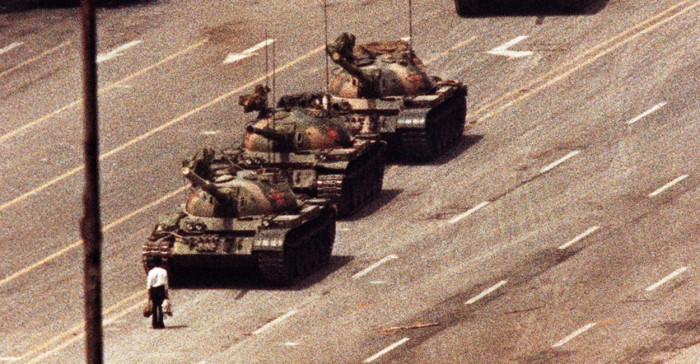Why Is The Tiananmen Square in China Famous Worldwide?
Tiananmen Square in China is a huge city square space which is primarily known for the democratic protests of the 1989 and the massacre that followed.

Tiananmen Square is a city square in the centre of Beijing, China, named after the Tiananmen ("Gate of Heavenly Peace") located to its north, separating it from the Forbidden City.
The square contains the Monument to the People's Heroes, the Great Hall of the People, the National Museum of China, and the Mausoleum of Mao Zedong.
Tiananmen Square is known to be one of the largest urban city square space in the world. It has great cultural significance as it was the site of several important events in Chinese history.
‘Tank Man’ Is One Of The Reasons For The International Popularity Of Tiananmen Square

The image of an unidentified man standing alone in defiance and blocking a column of Chinese tanks on June 5 remains a lasting one for much of the world of the events. He is now renowned as the “Tiananmen Square Tank Man.”
That same day, some 70,000 people in Hong Kong attend a memorial vigil for the victims of the massacre.
The Tank Man Was A Part Of The Protests For A Democratic Government

As notable as Tiananmen Square is within China, it became known worldwide as the site of the Tiananmen Square Massacre, which occurred on June 4 and 5, 1989.
Although the massacre, as it is known in the West, was limited to just that two-day period, the event itself was weeks in the making.
Students had been occupying Tiananmen Square since early May 1989. At issue was their frustration with the limits on political freedom in the country—given its one-party form of government, with the Communist Party holding sway—and ongoing economic troubles.
The Pro-Democracy Protests Led To One Of The Most Brutal Massacres In The History Of Mankind

While the initial presence of the military failed to quell the protests, the Chinese decided to increase its aggression. At 1 a.m. on June 4, Chinese soldiers and police stormed Tiananmen Square, firing live rounds into the crowd.
Although thousands of protesters simply tried to escape, others fought back, stoning the attacking troops and setting fire to military vehicles. Reporters and Western diplomats there that day estimated that hundreds to thousands of protesters were killed and as many as 10,000 were arrested.
Worldwide leaders, including Gorbachev, condemned the military action and, less than a month later, the United States Congress voted to impose economic sanctions against China, citing human rights violations.
Millions Gather For The Annual Vigil Held At The Square On June 4 Commemorating The Martyrs

On the 20th anniversary of the massacre, the Chinese government prohibited journalists from entering Tiananmen Square and blocked access to foreign news sites and social media. Still, thousands attended a memorial vigil in honor of the anniversary in Hong Kong.
Even after the Chinese government reopened the National Museum at Tiananmen Square following a major renovation, the important exhibition space still contains no mention of the 1989 protests, or the military response.
Popular Posts
Top 10 Sharpest & Deadliest Swords In History
In classic mythological movies, books and television, we’ve seen those audacious sword-wielding heroes smiting the enemi...
Augustus Perez
List of Water Deities from Different Mythologies
Water deities are the gods and goddesses who had the powers to control the elements of water and ruled over all the fresh and saltwater of the earth. Here’s a list of water deities from different mythologies.
Rishika Gupta
Winged Lion: The Terrifying Mythical Creature In Different Mythologies
A mythological creature, a winged lion dates back to ancient times. This flying lion-like creature has origins in Heraldry, Christianity, Mesopotamian, and Greek mythologies.
Ethan Stephans








